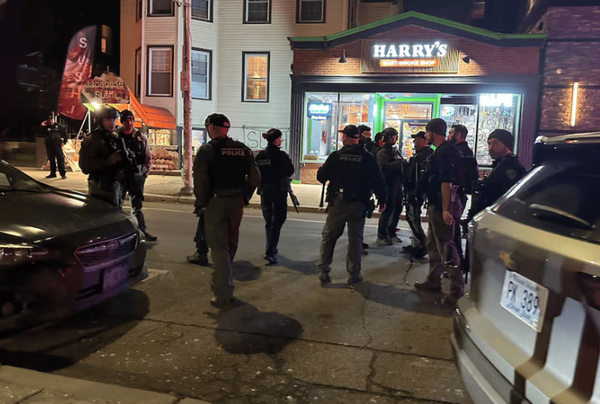
The expected release of 41 workers trapped in a collapsed tunnel in northern India has been delayed yet again, forcing them to spend a 13th night inside.
The men were expected to emerge by Friday evening with the last stretch of about 10 metres of concrete rubble all that was left to be cleared.
Drilling had to be stopped after the machine repeatedly hit an iron object that it could not drill through.
By late Friday evening, drilling had not been resumed. The upbeat mood at the scene, where a more than 200-strong rescue team has been toiling to rescue the workers, turned pensive when the drilling stopped.
Ambulances and doctors at a makeshift hospital are on standby to receive the exhausted workers, who became trapped behind a wall of concrete debris and rubble when the roof of the tunnel they were working on in Uttarakhand collapsed on 12 November.
The tunnel is part of the prime minister Narendra Modi’s flagship project to connect some popular Hindu sites in the country and to improve access to strategic areas bordering China.
From the outset, the complex and delicate rescue operation has been fraught with risks and beset by delays. On Thursday morning, the drilling machine hit some iron mesh that it could not penetrate, and welders were called in to remove it.
In the evening the machine stopped drilling when it hit some crowbars, which had to be removed with gas cutters. On Friday the machine had to stop again after encountering iron objects.

“All this time, the fear at the site has been that the drilling itself could cause vibrations that would trigger yet another chunk of the roof to collapse,” said Mahmood Ahmad, an official with the National Highways Corporation.
At one stage, after repeated breakdowns of the drilling machine created a sense of despondency, thought was given to trying another tack. “We decided to try drilling from all sides – drilling from the other end of the tunnel, from the sides and drilling vertically from the roof down to the workers,” said Arnold Dix, a tunnelling expert who had flown in from Australia to lend a hand.
But this would have necessitated a massive clearing of trees and the use of heavy machinery, earth movers and trucks to flatten the ground and build a road, paths and platforms to move the drilling machine to the right spot. By midweek it had been decided to continue with the original strategy, drilling horizontally through the debris and hoping that no insurmountable object lay in the way.
When the drilling machine reaches the workers, the next step will be to weld the last two sections of a pipe to complete the creation of an escape passage. After this, the delicate process of pulling the workers up on stretchers fitted with wheels will begin.

Abhishek Ruhela, a district magistrate, said: “We are hoping they are strong enough to cope with being pulled up through a narrow pipe. The surface will be rough and sharp in some places. To avoid injuries, they will be strapped to the stretchers to limit their movements.”
Initially, rescuers had predicted that the men would be out within a few days. But with one technical snag after another, officials stopped giving a timeframe, realising that it was impossible to predict what nasty surprises lay inside the tunnel.
Meanwhile, families waiting outside in the freezing cold began voicing their frustration. One man had lost a son at a construction site in Bombay earlier this year and now his second son was stuck inside.
A rehearsal of the rescue on Friday morning, when one of the rescuers went into the passage on a stretcher and returned to the surface, went smoothly. Cheers broke out.
“Congratulations buddy. How did it feel? Comfortable? No problem towards the end?” asked members of the rescue team as they crowded around him.

Syed Ata Hasnain, a member of the National Disaster Management Authority, told the NDTV news channel that a water pipe installed during the construction had saved the workers from probable death. It was through this pipe that small packets of dried food and medicines were pushed through.
“The packets had to be small because it would have been a total disaster if the pipe had got blocked with a large packet,” said Hasnain, adding that without this pipe there would have been no chance of a rescue.
Another piece of good fortune was that the workers’ power cable did not snap during the collapse. Without it, the men would have been in the dark.
The fact that it has been warm inside the tunnel, even though it is bitingly cold outside, has also helped. Doctors say the workers will need to be protected against the sudden change in temperature.

When the rescue operation is over, Modi’s construction projects in the region will come under scrutiny. Geologists and environmentalists have said the government is playing with fire by building gigantic infrastructure projects in the fragile geology of the Himalayas. They say the rock formation, being young in geological terms, is loose and fractured.
Safety measures during such projects have been criticised. Relatives said some of the workers had complained about bits of debris falling from the roof but no one had paid any attention. Tunnel experts have said that usually an escape tunnel is created so that workers can be evacuated if needed but this was not done.
Uttarakhand’s chief minister, Pushkar Singh Dhami, has promised a review of all tunnel projects in the state.







